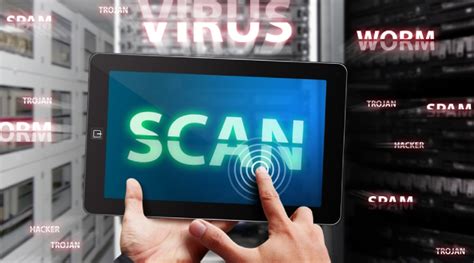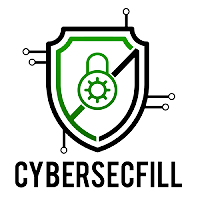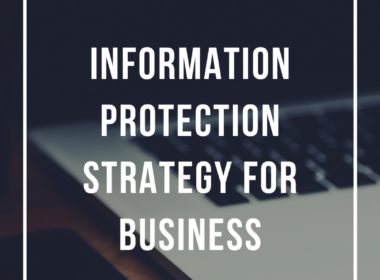Are you concerned that your computer may have a virus? If your computer is infected, learning how to get rid of a computer virus is vital. This article teaches you all there is to know about how computer viruses work and computer virus removal.
How To Get Rid Of A Computer Virus
In this section, we shall explore how to get rid of a computer virus from a PC and a Mac.
Removing A Computer Virus From A PC
Computer viruses are almost always invisible. Without anti-virus protection, you may not know you have one. This is why it is vital to install anti-virus protection on all your devices.
If your PC has a virus, following these ten simple steps will help you to get rid of it:
Step 1: Download And Install A Virus Scanner
Download a virus scanner or complete internet security solution.
Step 2: Disconnect From The Internet
When you are removing a virus from your PC, it is a good idea to disconnect from the internet to prevent further damage. Some computer viruses use the internet connection to spread.
Step 3: Reboot Your Computer Into Safe Mode
To protect your computer while you remove the virus, reboot it in Safe Mode. Are you unsure of how to do this?
Here is a simple guide:
- Turn your computer off and on again
- When the screen lights, press F8 to bring up the ‘Advanced boot’ options menu
- Click Safe Mode with Networking
- Remain disconnected from the internet
Step 4: Delete Any Temporary Files
Next, you need to delete any temporary files using ‘Disk Clean Up’.
Here’s how to do this:
- Click the Windows logo on the right bottom
- Type “Temporary Files”
- Choose “Free up disk space by deleting unnecessary files”
- Find and select “Temporary Internet Files” in the ‘Files to delete’ Disk Cleanup list and click OK
- Confirm “Delete Files” selection
Some viruses are programmed to initiate when your computer boots up. Deleting temporary files may delete the virus. However, it is not safe to rely on this. To ensure you rid your computer of viruses, it is wise to complete the following steps.
Step 5: Run A Virus Scan
Now it is time to run a virus scan using your chosen anti-virus or internet security software. Click on “Run Scan”.

Step 6: Delete Or Quarantine The Virus
If a virus is found, it may affect multiple files. Select ‘Delete’ or ‘Quarantine’ to remove the file(s) and get rid of the virus. Rescan your computer to check that there are no further threats. If threats are found, quarantine or delete the files.
Step 7: Reboot Your Computer
Now that the virus is removed, you can reboot your computer. Simply turn it on as you would normally. It no longer needs to be in Safe Mode.
Step 8: Change All Your Passwords
To protect your computer from further attack, change all your passwords in case they were compromised. This is only strictly necessary if you have reason to believe your passwords have been captured by malware, but it is better to be safe than sorry.
You can always check the virus’s functionality on your anti-virus vendor’s website or with their technical support team if unsure.
Step 9: Update Your Software, Browser, And Operating System
Updating your software, browser and operating system will reduce the risk of flaws in old code being exploited by criminals to install malware on your computer.
Removing A Computer Virus From A Mac
If you use a Mac, you may be under the impression that your computer cannot get a virus. Unfortunately, this is a misconception. There are fewer viruses that target Macs compared with the many that target PCs, but Mac viruses do exist.

Some Mac viruses are designed to trick users into thinking they are anti-virus products. If you accidentally download one of these, your computer may be infected. Three examples of Mac viruses of this type are MacDefender, MacProtector, and MacSecurity.
If you think your Mac has a virus, here are six steps to follow to remove it:
- Quit the application or software that seems to be affected.
- Go to ‘Activity Monitor’ and search for known Mac viruses such as MacDefender, MacProtector, or MacSecurity.
- If you find one of these viruses, click ‘Quit’ process before quitting Activity monitor.
- Next, go to your Applications folder and drag the file into your Trash.
- Remember to empty the Trash folder afterward to permanently delete the virus.
- Now make sure your software and apps are up to date to benefit from the latest security patches.
To ensure nothing is missed and to keep your Mac protected, consider installing an anti-virus solution if you do not already have one. There is a lot of comprehensive internet security solution you could install.
What Is A Computer Virus?
A computer virus is a type of malware (malicious software) designed to make self-replicate, i.e. to make copies of itself on any drive connected to your computer.
Computer viruses are so-called because, like real viruses, they can self-replicate. Once your computer is infected with a virus, this is how it spreads. When a computer virus infects your computer, it may slow it down and stops it from working properly.
There are three main ways that your computer may have become infected with a computer virus. The first way your computer could become infected is from removable media, like a USB stick. If you insert a USB stick or disk into your computer from an unknown source, it may contain a virus.

Sometimes hackers leave infected USB sticks or disks in people’s workplaces, or public places like cafes to spread computer viruses. People sharing USBs may also transfer files from an infected computer to one that isn’t infected.
Another way your computer becomes infected with a virus is through a download from the internet. If you are downloading software or apps to your computer, ensure you do so from a trusted source. For example, the Google Play Store or Apple’s App Store. Avoid downloading anything via a pop-up or a website you do not know.
The third way your computer could become infected with a virus is if you open an attachment, or click on a link in a spam email.
Whenever you receive mail from a sender you do not know or trust, avoid opening it. If you do open it, you shouldn’t open any attachments or click on any links.
How To Tell If Your Computer Has a Virus
There are numerous signs to look out for that indicate your computer may have a virus. Firstly, is your computer slowing down? If everything is taking longer than usual, your computer may have become infected.
Secondly, look out for apps or programs that you do not recognize. If you see an app or a program appear on your computer that you do not remember downloading, be cautious.

It is a good idea to uninstall any software you do not recognize and then to run a virus scan using anti-virus or internet security software to check for threats. Pop-ups that appear when your browser is closed are a tell-tale sign of a virus. If you see these, take immediate action to remove the virus, by following the steps outlined above.
Another sign that your computer may have a virus is if apps or programs on your computer start behaving strangely. If they start crashing for no apparent reason, your computer may have a virus.
Finally, a virus may cause your computer to start overheating. If this happens, investigate whether you have a virus using anti-virus or internet security software.
Can Your Computer Become Infected With A Virus Via Email?
Your computer can become infected with a virus via email, but only if you open attachments within a spam email or click on the links contained in them.
Simply receiving a spam email will not infect your computer. Just mark these as spam or junk and ensure they are deleted. Most email providers will automate this (Gmail for example) but if any slip through the net, just mark them as spam yourself and don’t open them.
How To Protect Your Computer From Viruses
Here are some key ways that you can protect your computer from viruses:
- Use anti-virus software or a complete internet security solution. There are a number of them you could use.
- Research apps and software by reading user reviews.
- Read developer descriptions before you download apps and software.
- Only download apps and software from trusted sites.
- Check how many downloads apps and software have. The more the better.
- Check what permissions apps and software ask for. Are these reasonable?
- Never click on unverified links in spam emails, messages, or unfamiliar websites.
- Do not open attachments in spam emails.
- Keep software, apps, and your operating system updated.
- Use a secure VPN connection for public Wi-Fi.
- Never insert unknown USB sticks or disks into your computer.









